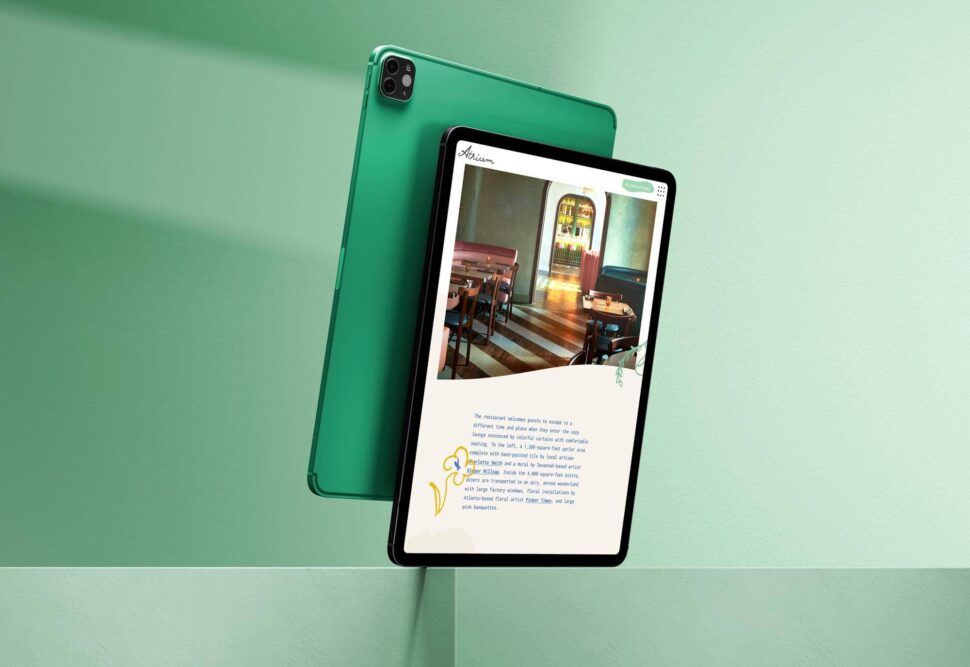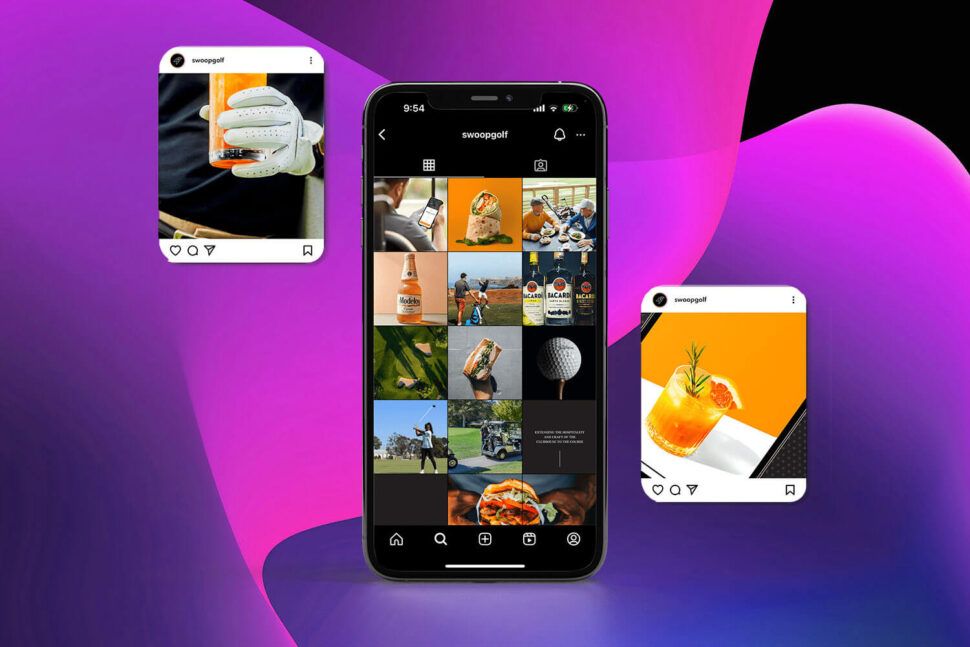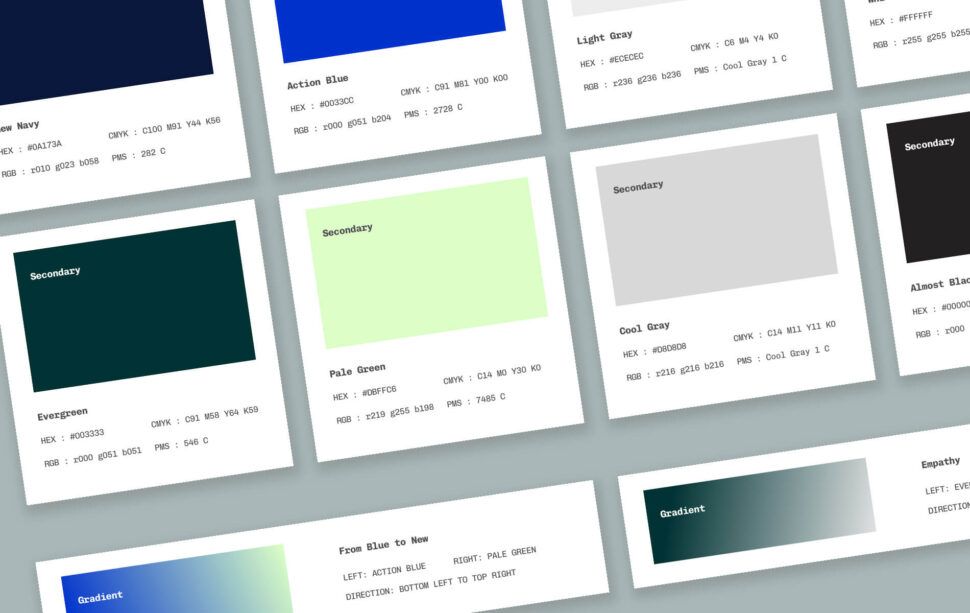August 27, 2024
Exploring Upcoming Trends in Brand Storytelling for 2025
- Visual Soldiers
- Branding
- minute read

TLDR
Brand storytelling has become crucial for businesses to connect with audiences. As we approach 2025, it’s important to stay ahead of upcoming trends in brand storytelling to stand out in the competitive market. Immersive and interactive content, including augmented reality (AR) and virtual reality (VR), is set to play a significant role in brand storytelling. It’s essential for businesses to understand and prepare for these trends to effectively engage with their audience and create compelling narratives.
Brand storytelling has unquestionably hit its stride in recent years, emerging as a vital way for companies to connect with their audiences deeply. It’s no longer just about selling a product or service; it’s about crafting a compelling narrative that resonates and fosters enduring customer relationships. As we approach 2025, staying ahead of the upcoming trends in brand storytelling is absolutely critical. Businesses that stay abreast of these trends can set themselves apart in a competitive marketplace and forge more impactful connections with their audience.
So why focus on the future of brand storytelling? Simple. In a world where consumers are bombarded with endless streams of content, it’s not just advisable but critical to stand out with a story that consumers feel part of. Getting ahead of the curve allows brands to innovate and captivate their target markets in unique ways that resonate long past the initial interaction. Whether you’re a seasoned marketing professional or a business owner looking to elevate your brand, understanding the upcoming trends in brand storytelling for 2025 can offer invaluable insights that keep you ahead of the competition.
Introduction to Brand Storytelling in 2025
The Growing Importance of Brand Storytelling
In an increasingly digital and noisy world, brand storytelling has never been more crucial. It’s not just about pushing products or services anymore; it’s about creating connections and building relationships. Consumers today crave authenticity and emotional engagement. That’s where brand storytelling steps in, providing companies with an avenue to share what they do and, who they are and why they do it.
Brand storytelling has evolved dramatically over the years. Gone are the days when a catchy jingle or a flashy advertisement could do the trick. It’s about weaving a narrative that resonates personally, creating a more profound and lasting impact. With the year 2025 on the horizon, it’s essential to keep an eye on the upcoming trends in brand storytelling to remain relevant and competitive.
Staying Ahead of Upcoming Trends in Brand Storytelling for 2025
So, why is it essential to get ahead of these upcoming trends in brand storytelling for 2025? Well, let’s break it down a bit. Trends in storytelling can change as swiftly as consumer expectations. By anticipating these changes, businesses can pivot more effectively and meet their audience where they are.
Staying on top of these trends ensures your brand remains fresh and innovative. It’s a surefire way to keep your audience engaged and invested. Furthermore, ahead-of-the-curve storytelling can set you apart from competitors stuck in tried-and-true methods that no longer pack the same punch.
Moreover, brand storytelling isn’t just about resonating with your current audience; it’s also about reaching new ones. By staying ahead of the curve, you’re more likely to captivate wide-eyed, curious consumers looking for something different and memorable.
Preparing for the Future of Storytelling
As we gear up for 2025, several upcoming trends in brand storytelling are already beginning to make waves. The future holds exciting possibilities, from immersive and interactive content to AI-powered personalized narratives. Brands keen to innovate must experiment and adapt to these trends to stay relevant.
But let’s take a step back. Before diving headfirst into these trends, it’s valuable to understand the bedrock of compelling brand storytelling. At the core, it’s about constructing a narrative that aligns seamlessly with your brand’s values and mission. Always aim to keep the storytelling authentic and engaging, no matter the trends you’re exploring.
But let’s take a step back. Before diving headfirst into these trends, it’s valuable to understand the bedrock of compelling brand storytelling. At the core, it’s about constructing a narrative that aligns seamlessly with your brand’s values and mission. Always aim to keep the storytelling authentic and engaging, no matter the trends you’re exploring.
So, whether you’re a marketing professional striving to fine-tune your strategies, a business owner aiming to connect more deeply with your audience, or someone simply on the lookout for effective marketing services, understanding and preparing for these trends is your golden ticket to storytelling success in 2025.
With the knowledge and creativity that companies like Visual Soldiers bring to the table, businesses can craft compelling stories that don’t just speak to their audience but also listen and engage. So, as we move towards 2025, it’s time to embrace these upcoming trends in brand storytelling and make your brand’s story one that’s worth telling. What could be more exciting than that?
Immersive and Interactive Content
The world of brand storytelling is evolving, and one of the most exciting upcoming trends in brand storytelling for 2025 is the rise of immersive and interactive content. With the rapid advancements in technology, particularly in augmented reality (AR) and virtual reality (VR), brands now have unprecedented opportunities to create truly engaging stories that captivate their audiences.
Exploring the Rise of AR and VR in Brand Storytelling
AR and VR are not just buzzwords; they’re becoming integral to how brands communicate their stories. AR allows brands to overlay digital content onto the real world, creating a blend of physical and virtual experiences. Imagine pointing your phone at a product and seeing an animated story about its creation or scanning a logo and diving into a 360-degree VR experience that takes you inside the company. These technologies offer immersive content that can make storytelling more vivid and memorable.
Brands like IKEA have been early adopters, using AR to let customers visualize how furniture would look in their homes. Another standout is Nike, which has used VR to provide immersive experiences of its latest sneakers, allowing customers to try them on virtually and even see them in different environments.
The Role of Interactive Experiences and Gamification in Engaging Audiences
Interactive experiences and gamification are becoming powerful tools in brand storytelling. Interactive storytelling involves engaging the audience in a two-way dialogue, making them active participants rather than passive observers. This can be through simple interactive elements on a website or more complex scenarios like choice-driven narratives where the user’s decisions impact the story’s outcome.
Gamification adds a layer of fun and engagement by incorporating game-like elements into non-gaming contexts. This could involve reward systems, challenges, or leaderboards, designed to make the experience more engaging and rewarding for the audience. Brands like Starbucks have successfully used gamification in their loyalty programs, which keeps customers returning for more.
Case Studies of Successful Brands Using AR/VR in Storytelling
Let’s look at a few case studies to see how brands are successfully using AR and VR in their storytelling:
-
✓
Coca-Cola
During the 2018 FIFA World Cup, Coca-Cola launched an AR campaign where fans could scan limited-edition Coke cans to unlock exclusive AR content featuring famous soccer players. This not only increased engagement but also boosted sales during the event.
-
✓
New York Times
The NYT has been experimenting with VR to provide its readers with immersive journalism. By creating VR experiences for significant news stories, it has allowed its audience to step into the story, gaining a much deeper understanding and emotional connection.
-
✓
Sephora
The beauty retailer uses AR to let customers try on makeup products virtually. This has transformed the shopping experience, making it more interactive and personalized.
These brands have demonstrated how powerful AR and VR can be in brand storytelling, offering their audiences unforgettable experiences that foster stronger connections with the brand.
As we move closer to 2025, immersive and interactive content will play a pivotal role in brand storytelling. It’s not just about telling a story; it’s about creating an experience that your audience can participate in. By embracing technologies like AR and VR and integrating interactive elements and gamification, brands can create more engaging, memorable, and impactful stories for their audiences.
What’s your favorite example of a brand using immersive content in their storytelling?
Personalization and Customized Narratives
The Impact of AI and Machine Learning on Creating Personalized Brand Narratives
AI and machine learning are revolutionizing how brands interact with their audiences. These technologies allow brands to dive deep into consumer behavior, preferences, and needs. By analyzing vast amounts of data, AI can predict what content will resonate most with individual users. This means brands can create more personalized brand narratives that speak directly to their audience’s interests.
Personalization is becoming a critical element in the evolving landscape of brand storytelling. But what exactly is driving this shift? One word: technology. More specifically, artificial intelligence (AI) and machine learning.
Imagine visiting a website and seeing content tailored just for you, based on your browsing history, previous purchases, or social media activity. It feels almost like the brand knows you personally—that’s precisely the point. Employing AI and machine learning to craft these customized narratives makes the storytelling experience more engaging and relevant.
Strategies for Leveraging Consumer Data to Craft Customized Stories
So, how can brands effectively leverage consumer data for personalized storytelling? Here are a few strategies:
1. Segmentation: Start by segmenting your audience based on different criteria like demographics, behaviors, or purchasing patterns. This allows you to produce content geared explicitly towards distinct groups within your audience.
2. Behavioral Analysis: Monitor your audience’s interaction with your content. Look for what types of posts they like, share, or comment on, and use this information to create stories that appeal to their preferences.
3. Predictive Analytics: Use predictive analytics to forecast future consumer behaviors and trends. By anticipating what your audience will need or be interested in following, you can stay ahead in providing relevant content.
4. Dynamic Content: Employ dynamic content elements that change based on user data. For instance, display personalized recommendations based on past interactions on your website. This makes your storytelling fluid and adaptable to individual needs.
Examples of Brands Effectively Using AI for Personalized Storytelling
Let’s talk about some real-world examples where brands have nailed it with AI-driven personalization:
Netflix: Perhaps one of the most well-known examples, Netflix uses sophisticated algorithms to recommend shows and movies tailored to individual viewing habits. The platform’s ability to suggest content based on what a user has previously watched significantly enhances viewer engagement and satisfaction.
Spotify: Like Netflix, Spotify uses AI to curate playlists based on listening habits. Discover Weekly playlists are a prime example of how personalized recommendations keep users hooked.
Starbucks: Leveraging AI, Starbucks crafts individualized marketing emails based on past purchases and preferences. They even have a feature in their mobile app that uses predictive analytics to suggest orders based on previous visits.
Making Personalized Brand Narratives Work for You
Creating personalized brand narratives doesn’t have to be daunting. With the right tools and strategies, it can become an integral part of your storytelling approach. AI and machine learning may sound tech-heavy, but plenty of user-friendly platforms and services can help you get started.
At Visual Soldiers, we specialize in helping brands leverage cutting-edge technologies to craft engaging, customized brand experiences. With our expertise, you can create stories that captivate and resonate deeply with your audience’s unique preferences and needs.
As you explore upcoming trends in brand storytelling for 2025, how do you plan to integrate personalization into your strategy?
Upcoming Trends in Brand Storytelling for 2025
Sustainability and Social Impact Stories
The world is changing, and so are the demands of consumers. People increasingly want brands to not just sell products, but to stand for something meaningful. One of the biggest upcoming trends in brand storytelling for 2025 is the focus on sustainability and social impact stories.
The Demand for Sustainability in Brand Storytelling
Consumers are becoming more conscientious about the environment and social issues. They’re looking for brands that resonate with their values, especially regarding sustainability. This isn’t just about ticking a box; it’s about weaving authentic stories highlighting a brand’s genuine commitment to improving the world.
Why has there been such a spike in this trend? Well, for one, younger generations are leading the charge. Millennials and Gen Z are known for prioritizing eco-friendly practices and social responsibility. In fact, a 2021 study found that 75% of these consumers consider a brand’s environmental impact before purchasing. That’s a massive chunk of the market!
Integrating Social Impact into Brand Narratives
But how do companies authentically integrate these messages into their brand narratives without appearing disingenuous or greenwashing? The key is authenticity and transparency.
First off, tell real stories. Showcase your brand’s genuine efforts and initiatives through documentary-style content, rich storytelling, and data-backed claims. Share behind-the-scenes looks at how your products are sourced and made. Give customers an inside view into the lives of the people and communities impacted by your business.
Next, engage your audience. Give them a seat at the table. Many brands incorporate interactive elements such as live Q&A sessions, social media hashtags for user-generated content, and community projects that allow consumers to participate in their mission.
Lastly, consistency is crucial. Authentic brand narratives aren’t one-off campaigns. They’re a continuous dialogue with your audience. Align your marketing strategies with internal policies, and make sure your actions match your words.
Leading Brands in Sustainability Storytelling
Let’s take a look at some of the brands that are leading the way in sustainability storytelling.
One shining example is Patagonia. The outdoors brand has built a massive following by putting sustainability at the center of its brand narrative. From its Don’t Buy This Jacket campaign to its commitment to using recycled materials, Patagonia’s storytelling is deeply intertwined with its mission to save the planet. It even launched a digital platform showcasing its activism efforts, which included videos and stories about environmental projects around the globe.
Another brand worth mentioning is Toms. Known for its “One for One” initiative, where every purchase helps a person in need, Toms leverages social impact stories to create an emotional connection with its customers. Through compelling videos and blog posts, they show the tangible impact of their products, making their storytelling both relatable and heartwarming.
Finally, there’s Ben & Jerry’s. The ice cream company doesn’t shy away from addressing social justice issues. They’re vocal about climate change, racial inequality, and LGBTQ+ rights. By aligning their product storytelling with these causes, they’ve created a brand narrative that’s both powerful and impactful.
These brands aren’t just telling stories; they’re living their stories. Their authenticity shines through, creating a loyal customer base that stands by them for their products and principles.
Crafting compelling and honest narratives might seem daunting for marketing professionals, business owners, and anyone looking for marketing services.
That's where we can come in handy. Our expert creative services ensure that your brand storytelling aligns with your sustainability and social impact goals and resonates genuinely with your audience.
Book a CallConclusion
As you consider the future and upcoming trends in brand storytelling for 2025, ask yourself: How can your brand become a beacon of positive change in the world?
As we look towards 2025, it’s clear that brand storytelling is evolving in exciting ways. With the emergence of immersive and interactive content through AR and VR, brands are finding innovative methods to engage their audiences like never before. We’re seeing the powerful potential of gamified experiences that entertain and deeply connect consumers with brand values and narratives. As fun as these technologies are, they’re not just a novelty but a pivotal trend in modern storytelling strategies.
Personalization remains a crucial player in the future of brand storytelling. Integrating AI and machine learning means brands can craft more personalized and compelling narratives that resonate with their audiences. This isn’t just about throwing data at the problem; it’s about understanding and connecting with people through tailored experiences, making each interaction meaningful and memorable.
Let’s not forget the growing importance of sustainability and social impact stories. In a world increasingly conscious of its social and environmental footprint, consumers are eager to support brands that share their values. Genuine stories about sustainability and social responsibility are not just trendy—they’re essential. Brands that seamlessly weave these themes into their narratives can build a loyal and engaged customer base longing for authenticity and ethical alignment.
In a nutshell, the upcoming trends in brand storytelling for 2025 are about creating more profound, interactive, and authentic connections with audiences. By staying ahead of these trends, businesses can ensure their storytelling remains relevant and impactful. Here at Visual Soldiers, we’re passionate about helping marketing professionals navigate these changes with expert creative services designed to keep you at the forefront of brand storytelling. Are you ready to make your brand’s story unforgettable?






